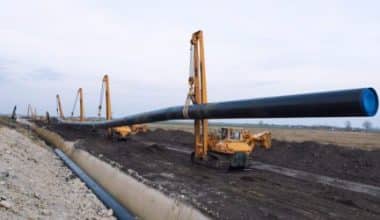In this article, we look at All Risk insurance with insurance and its benefits when it involves contracts.
What is risk insurance?
“All risks” refers to an insurance policy that automatically covers every risk that is not expressly excluded by the contract. For instance, a residence will be insured in the case of flood damage if an “all-risk” homeowner’s policy does not expressly exclude flood coverage.
Note that only the property-casualty market offers this kind of coverage.
Note that:
- In the property-casualty market, there is a comprehensive insurance product called “All Risks.”
- Two forms of insurance that are frequently provided to property owners and company owners are named perils and all risks.
- When all risks are covered by insurance, the policyholder is free to pursue damages for any occurrences that the contract doesn’t expressly exclude from coverage.
- In most cases, policyholders can pay more to have a rider or floater that would cover a certain occurrence that was excluded from the contract added to it.
- It is different from named perils insurance, which only allows the policyholder to claim compensation for incidents that are specifically mentioned in the contract.
How All Risks Coverage Works
One sort of insurance that might be regarded as offering all-risks protection is a personal liability umbrella insurance policy, which handles high-dollar claims and specific situations that homeowners and vehicle insurance do not. However, many situations are still not covered by personal liability umbrella plans, including willful harm, business responsibility, damage to your property, and damage brought on by war, among other limitations. These policies do cover occurrences involving personal culpability as well as everything else the policy is intended to cover.
Perils coverage and all-risks coverage are the two main types of property insurance that insurance companies often offer to homeowners and businesses.
- An “all-risks coverage” policy will not cover any losses of any kind. Insurance policies will often mention numerous incidents that are not covered because they are typically created to cover particular circumstances.
- Most frequently, perils including earthquakes, conflict, government seizure or destruction, wear and tear, infestation, pollution, nuclear threats, and market losses are not covered by all-risks insurance.
What are the three types of insurance risks?
These three broad categories encompass a wide variety of insurance risks, which include the following:
- Personal risk refers to dangers to your life or physical safety.
- Property risk refers to dangers to your residential or commercial property.
- Liability risk comprises threats to your financial security as a result of other parties claiming harm or death and holding you legally responsible for it.
What is an example of an all-risk policy?
For instance, a residence will be insured in the case of flood damage if an “All Risk” homeowner’s policy does not exclude flood coverage.
What is Contractor All Risk Insurance Coverage?
Contractors’ All Risks (CAR) have two main forms of risks on construction projects: property damage and third-party injury or damage claims, which are covered by insurance, a non-standard insurance policy.
- Inadequately built structures, damage sustained during renovations, and damage to temporary structures put up on the property are all examples of property damage.
- Third-party injuries involve subcontractors, and other visitors could get hurt while working on the construction site. In addition to covering these related hazards, CAR insurance combines these two categories of risks into a single policy to fill any coverage gaps that would otherwise arise from using separate policies.
Additionally, building, water tank, sewage treatment, flyover, and airport construction projects frequently have CAR insurance coverage.
Note that:
- Contractors’ all risks (CAR) insurance is a specialized type of insurance that covers claims for property damage, bodily injury, or property damage to third parties.
- The two main risk categories that apply to building projects are those two.
- Inadequately built structures, damage sustained during renovations, and damage to temporary structures put up on the property are all examples of property damage.
- Subcontractors and other visitors to the building site may also get hurt while working there.
- All parties involved in a project are intended to be protected by car insurance coverage.
The Best All Risk Insurance Company
#1. Liberty Mutual:
Our top recommendation for methods to cut costs is Liberty Mutual; you can be eligible for up to 10 reductions to lower the pricey monthly premium on your high-risk home insurance policy. They will give you discounts if you have a new roof, bundle your home and vehicle policies, buy your insurance online, and other things.
Furthermore, even though Liberty Mutual doesn’t provide as many extras as rivals, its optional earthquake or hurricane coverage can safeguard properties in high-risk regions that frequently encounter extreme weather conditions or natural catastrophes. A similar benefit for property owners in high-crime regions is blanket jewelry insurance.
#2. Allstate:
Allstate is a reliable insurer with the financial capacity to cover claims from high-risk clients, earning a Superior financial strength rating from AM Best. A wide variety of deductibles and significant reductions for combining home and vehicle policies are two features of competitive coverage alternatives.
Furthermore, due to Allstate’s widespread availability, more places that experience extreme weather or natural catastrophes will likely be covered. Then, policyholders can add endorsements for items like their commercial premises, musical instruments, sporting goods, and yards and gardens. Through its subsidiary, National General Insurance, Allstate further provides comprehensive flood insurance with higher limitations than the NFIP, which is supported by the Federal Emergency Management Agency (FEMA).
#3. State Farm:
State Farm is a well-liked option for auto, property, renters, and house insurance. It can accept more risk because of its superior financial standing in the sector. Additionally, its user-friendly estimate procedure and online tools assist first-time homeowners in finding a policy that meets their specific risks.
Furthermore, State Farm issues and maintains insurance through a network of regional exclusive agents, so you can consult a qualified expert to ascertain whether the insurer can cover your high-risk property. Therefore, find out from them which common home insurance policies might not be covered and what additional coverage you could require. However, if State Farm is unable to insure your home, your agent might at least offer helpful advice that you can utilize as you search.
#4. USAA
For veterans and active-duty military personnel, USAA is the best insurance choice. With benefits including financial services, retail and rental vehicle savings, and a special endorsement for military uniform coverage, it improves competitive coverage.
Furthermore, high-risk homeowners may benefit from USAA’s earthquake protection and home-sharing coverages, but there is a catch. Only Oregon and Washington offer earthquake coverage, and not all states allow home sharing. USAA can assist you in obtaining flood insurance under the National Flood Insurance Program (NFIP) if you require it.
Nevertheless, USAA gains ground with personal property protection, which covers items like jewelry, smart watches, firearms, cameras, and musical instruments that are valued at $200 or more. There is no deductible, and personal property is insured at replacement cost in the present day, excluding depreciation.
#5. Travelers
One of the most financially stable insurance providers on the market is Travelers. To assist you in locating a policy catered to your specific risk factors, the company’s 30,000 employees and over 13,000 independent agents draw on their combined experience of more than 165 years in the sector.
Furthermore, higher-risk clients who actively reduce their risk of property crime can benefit from a protective device discount in addition to personal property and liability coverage. You might increase your chances of getting coverage in a high-risk location, for instance, by installing smoke detectors, fire alarms, home security systems, and smart home equipment that informs you when a fire or burglary occurs.
Travelers offer a $100 credit to policyholders each year that can be stacked and used to lower your deductible in the case of a loss. Additionally, the package stops a rate hike brought on by your first loss in five years.
How Much Does High-Risk Homeowners Insurance Cost?
High-risk policyholders are more likely to make a claim, which increases the cost of their insurance. The additional cost they incur depends on the level of risk. If other factors remain the same, you can be charged a different premium if your house is vulnerable to wildfire damage than if you have poor credit and have recently filed a home insurance claim.
The easiest method to acquire affordable coverage is to compare prices, speak with agents, and obtain several estimates to learn how different insurers will handle your particular scenario.
What are the benefits of all risk insurance?
An all-risks insurance policy protects the insured from all risks, except those that are listed as being excluded. All-risks insurance names the risks that are not covered rather than the risks that are covered. By doing this, every risk that isn’t mentioned in the list of exclusions is automatically covered.
The most frequent exclusions from “all risks” include the following dangers: earthquake, war, government seizure or destruction, wear & tear, infestation, pollution, nuclear hazards, and market losses. A person or company may choose to pay an additional premium, known as a rider or floater, to have a peril included in the contract if they need coverage for any excluded occurrence under an “all risks” policy.
Is all-risk insurance the same as liability insurance?
No, liability insurance and all-risk insurance are not the same thing. However, an all-risk insurance policy only provides coverage while a property is being built and expires after that. After the project is over and the property is sold or occupied, a general liability insurance policy may continue to cover damage to the property.
What is another name for the all-risk policy?
All-risk insurance is a kind of insurance policy that is more frequently referred to by phrases like “special perils coverage” by insurers. Note that it is normally the insurer’s burden to establish that a claim is not covered by an “all-risks” type of coverage.
What is the difference between all-risk and special forms?
Special Form coverage is the most extensive insurance coverage form available, making it also the most expensive. It is referred to as “all-risk” coverage, which means that you will be covered in the event of a loss unless there are specific exclusions mentioned in the policy. The insurance provider has the burden of demonstrating that the hazard that resulted in the loss is specifically excluded by the policy. Every special form policy contains some basic exclusions (some of which can be purchased as an endorsement or stand-alone policy, while others cannot) that include the following:
- Mold and fungus
- Wear & Tear
- Sewer & Drain Back-Up
- Earth Movement (including earthquakes and sinkholes)
- Flood
What type of insurance policy insures against all risks of loss?
The term “against all risks”, AKA all-risk insurance, refers to an insurance contract that offers protection from all potential losses or damages. An against-all-risks policy may still have exclusions, but the insured is protected from any dangers that are not specifically mentioned.
What are the four main types of insurance?
The four main types of insurance are life, health, long-term disability, and auto insurance.
ALL RISK INSURANCE: Definition, Coverage, and When You Need It
Best Insurance For High-Risk Drivers: Top 10 High-Risk Insurance in the U.S & Canada 2023
AMERICAN RISK INSURANCE: Reviews






